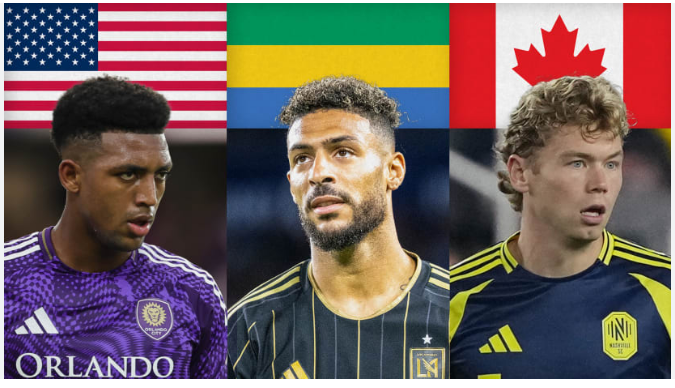Understanding the International Window
The international window is a critical period in the soccer calendar that provides teams and players the opportunity to participate in international duties. This window is primarily designed for national teams to convene and prepare for international friendlies or qualifiers, allowing nations to evaluate player performance and strategies in a competitive environment. For Major League Soccer (MLS) clubs, the international window represents a dual-edged sword; it can be both a chance to showcase their players on a global stage and a challenge as they may lose key squad members to their national teams, impacting their performance in domestic competitions.
<pduring (usmnt)="" absences.="" account="" ahead="" an="" are="" becomes="" been="" by="" called="" campaign="" clubs="" countries.<pthe adding="" additional="" aiming="" aligned="" an="" and="" as="" balance="" calendar,="" call-ups.
Analysis of Player Lists Released by MLS Clubs
The recent announcements of player lists by MLS clubs for the current international window provide an intriguing snapshot of team strategies and potential adjustments as they navigate this phase of the season. Each club’s selection reflects not only its commitment to player development but also a keen understanding of the dynamics at play in international competitions. As clubs manage their rosters, the decisions on which players are included or omitted from international call-ups speak volumes about their confidence in current talent and tactical priorities.
Key players named to international squads often highlight a club’s investment in quality talent. For instance, the presence of prominent USMNT members on these rosters underscores the leagues’ growing reputation as a viable pathway for players to earn international recognition. Additionally, clubs may choose to prioritize players who have recently demonstrated strong performances, thereby aligning their selection strategies with upcoming matches. This results in an exciting intersection of club success and national duty, where MLS can showcase its talent on a global stage.
Conversely, notable omissions from the lists raise questions about player tracking and future expectations. Clubs must balance the international commitments of their athletes with their own competitive aspirations within the league. The absence of a few standout players might suggest an emphasis on squad depth over individual talent, or it may simply indicate a strategic decision based on current form and fitness levels. Such nuances can impact team morale and performance as they continue their campaigns during the international break.
Ultimately, the player lists generated by MLS clubs during this international window offer valuable insights into their operational mindset. By understanding how these selections align with broader strategies, fans and analysts can better appreciate the complexities of player management in professional soccer. This interplay between club and country remains a defining characteristic of the MLS landscape.
Key Players to Watch During the International Window
As MLS clubs unveil their player lists for the international window, attention turns to the standout athletes poised to make significant contributions to their national teams. Among these players, several have established themselves as crucial components of their respective squads, often exhibiting outstanding form in recent matches. Their performances during this period could greatly influence their countries’ outcomes in important fixtures.
One player to observe closely is Christian Pulisic of the USMNT, who has become a pivotal figure for the national team. His ability to create goal-scoring opportunities and his technical proficiency have been instrumental for the USMNT in previous international call-ups. Pulisic’s recent performances in MLS have shown his capability to elevate the overall gameplay, making him a player to watch as he brings that momentum onto the international stage.
Another key athlete is Weston McKennie, also representing the USMNT. Known for his physicality and versatility, McKennie’s contributions in midfield are vital. His knack for breaking up opposition plays and transitioning towards attack has made him a vital asset. This international window presents an opportunity for McKennie to showcase his growth and adaptability on a larger platform, particularly after a series of successful rounds in MLS.
Moreover, the performance of players like Tyler Adams and Gio Reyna cannot be overlooked. Adams’ defensive acumen and Reyna’s creativity add depth to the lineup, enhancing the overall strength of the USMNT. These athletes not only face the pressure of performing under the national spotlight but also the opportunity to cement their status as key players in international football. As MLS prepares for this phase, the player tracking data will be meticulously analyzed to gauge each athlete’s impact during this promising international window.
Future Implications for MLS Teams Post-International Window
The recent release of player lists for international call-ups has significant implications for Major League Soccer (MLS) teams, particularly as they navigate the complexities of player management during and after the international window. One of the primary considerations for clubs is player fatigue, as athletes often face rigorous travel schedules and intense competition while representing their national teams. After returning, players may require time to recuperate, which can impact their performance levels in the following MLS matches.
In addition to fatigue, injuries sustained during international competitions can also pose a considerable challenge for MLS franchises. An injured player not only diminishes the team’s immediate competitive edge but also forces coaches to devise new strategies to compensate for the absences. As clubs grapple with the ramifications of lost personnel, they must also consider potential adjustments to training regimens, player rotations, and overall match tactics. The ability to manage these transitions efficiently directly affects a team’s ability to maintain their standings in the league.
Moreover, the performance of players in international matches is likely to influence their valuations in the transfer market and their roles within their respective MLS teams. Players who excel on the international stage may see an increase in interest from other clubs, impacting their current team’s roster decisions. Conversely, underwhelming performances could lead to decreased marketability and playing time within the league. It stands to reason that teams in MLS must closely monitor the outcomes of international games, facilitating informed decisions about trades, contracts, and player development as they move forward in the season.
In conclusion, as MLS teams respond to the effects of the international window, they must consider the complexities of player fatigue, injuries, and changing player valuations to ensure they remain competitive. Insights gained during this period will be crucial for future strategies and overall team success.

